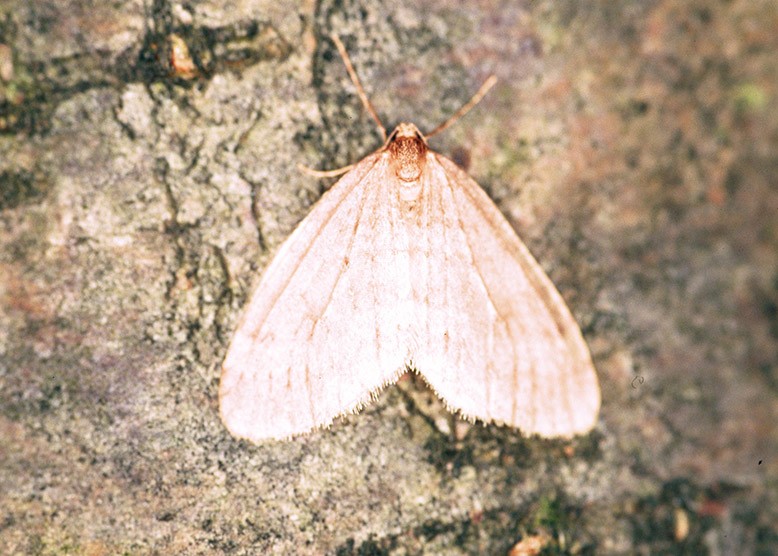
That Moth You’re Seeing May Be Winter Moth, and Your Landscape Could Be in Danger
Have you noticed suspicious moths fluttering around, though the weather is getting colder and we’re heading into winter? They could be Winter Moth, and your landscape may be in danger. Luckily, we have a few treatment options for you to keep in mind so you can make sure your trees, shrubs, and plants are safe for next year.
The Origin of Winter Moth
Winter Moth was introduced to North America from Europe and the Near East sometime in the 1930s. This invasive pest causes severe defoliation of hardwood trees, and as its name suggests, adult moths are generally active between November and January. Larvae begin feeding early on developing leaves. In cases of severe infestation, trees will have noticeable defoliation. In June, they drop to the ground to pupate in the soil until fall.
Early detection of Winter Moth is difficult as the first larvae begin feeding while the pre-formed leaf is still in the bud. First symptoms are only visible after these buds break and the leaves unfurl to reveal small feeding holes. Over the early weeks of the spring, this feeding damage becomes more apparent, and caterpillars may grow to a visible size. They may also descend from the canopy on silken threads. If you’re seeing these symptoms, it’s time to act.
Research shows that four consecutive years of defoliation can ultimately lead to tree mortality, so it is vital to protect your trees from Winter Moth before it’s too late.
Treatment Options
A certified arborist or landscape professional can help make sure your landscape is safe from Winter Moth. We recommend treating in early spring with AzaSol via trunk injection or spray. An arborist can offer injection treatments, which are safer for the environment as the chemical stays within the tree. This type of treatment limits any impact to you, your family, and the environment around you. To learn more about trunk injection, visit Arborjet online.
For smaller trees and shrubs, you can treat yourself by using AzaSol as a spray. Apply in early spring prior to bud break when temperatures are around 50 degrees F. A 0.75 oz pack makes up to 21 gallons of solution – use 1 to 4 teaspoons per gallon. To mix, add a bit of water to your container, and then add your desired amount of AzaSol. Close the container and shake until the powder dissolves, and then reopen to add the rest of the water. Be sure to use water that is a pH of 7 or lower, and mix only what you plan on using. You can purchase AzaSol through The Dirt on Dirt’s online store.
Don’t let Winter Moth get you down! Start planning your early spring treatment for next year now to save your trees. Find a list of recommended service providers on Arborjet’s website and explore your options today.


Sorry, the comment form is closed at this time.